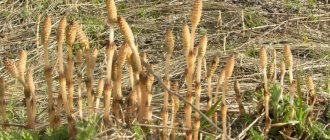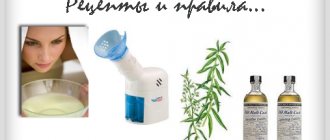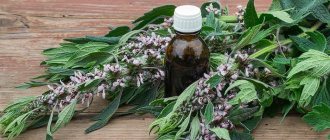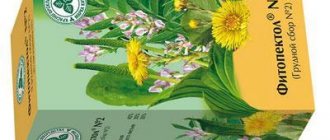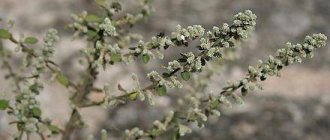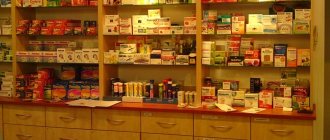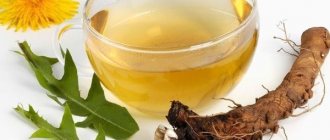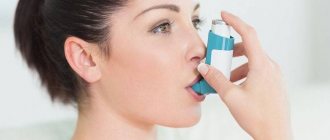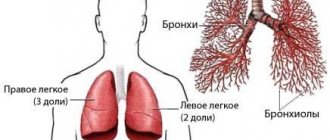Saline solution is popularly called a solution of sodium chloride, or simply table salt. The product is used as an antiseptic for washing wounds and inflamed mucous membranes. Inhalation with saline solution is an improved method of rinsing the nose and throat for coughs, runny nose and other symptoms accompanying respiratory diseases and ARVI.
- 2 Does the technique help?
- 3 Why do you need a nebulizer?
3.1 Video about using the device (program “About the most important things”)
- 6.1 Which cough can be treated: dry or wet
General information
Saline solution is a solution of sodium chloride, commonly known as table salt. Na chloride is an important element in the human body, which is responsible for maintaining the correct osmotic pressure in the body, allowing it to function normally.
Saline solution is also called isotonic because the concentration of sodium salt in it corresponds to the concentration of NaCl in the human body. Saline solution does not irritate the mucous membrane; it is most often used to prepare an inhalation solution with various medications.
How to perform inhalation correctly
To get the maximum effect from the procedure, you need to follow a few simple rules:
- carry out inhalation no earlier than an hour after eating;
- exclude physical activity before and after the procedure;
- for an hour after inhalation, do not drink or eat, try to avoid talking;
- maintain hand and face hygiene, wear clean clothes;
- disinfect the nebulizer mask.
Adults should perform inhalation procedures 3 times a day for 5–10 minutes. In children, cough is treated with inhalations lasting no more than 3 minutes and no more than 2 times a day.
Which cough can be treated: dry or wet?
The main task of inhalations for a dry cough is to transform it into a wet one and stop the inflammatory process. Sodium chloride solution has an anti-inflammatory effect; to cause sputum, you need to add a drug that has an expectorant effect to the saline solution. For a dry cough, the temperature of the aerosol in the nebulizer should be low.
After you have managed to induce a wet cough, you need to ensure the unhindered discharge of sputum. It is advisable to continue the course of treatment until the airways are completely clear.
How to make the procedure useful for children
A nebulizer is a real godsend for parents, because it can be used to treat children from birth. Silent models allow inhalation even during sleep without disturbing the baby.
Special attachments will make the procedure comfortable even for the smallest patients
The device is also indispensable for older children: many nebulizers are made in bright colors and have funny accessories that will distract the child during the procedure.
A children's nebulizer will turn inhalation into an entertaining game
The benefits and harms of saline solution
Doctors call saline solution “the most functional medicine”, since inhalations with it allow you to:
- effectively moisten the larynx;
- remove mucus, ensure productive liquefaction of sputum.
A saline solution is indispensable in case of dehydration: to restore normal fluid content, the medicine is introduced into the body by injection IM or IV. Saline solution is not the cause of allergic reactions. Preparing a solution for inhalation with it ensures preservation of the pharmacological effect of the medications prescribed by the attending physician.
Rinsing the nasopharynx and inhalation procedures with saline are good for curing a runny nose in a short time. Saline solution is in demand in combination with a set of therapeutic procedures for the following diseases:
- nasopharyngitis;
- bronchitis;
- incessant vomiting;
- diarrhea;
- intoxication.
Since saline solution is isotonic to blood plasma, it is completely harmless to the body. When carrying out inhalations with additional medications, their compatibility with the sodium salt should be taken into account.
How to do inhalations with saline in a nebulizer
This treatment method receives positive feedback from patients and doctors. A nebulizer converts liquid medicine into aerosol form. For this purpose, there are device designs that differ in operating principle. To produce fine particles, such devices are used:
- compressor – compressed air;
- ultrasonic – vibrations with a high frequency of a piezocrystal;
- membrane - passing liquid through a plate with microscopic holes.
Regardless of the design, when carrying out inhalation using a nebulizer, the medicinal solution should be prepared correctly. To complete the procedure, you will need:
- Take the required amount of medicine prescribed by your doctor - draw up the volume with a syringe or drop by drop using a dispenser on the bottle.
- Add saline solution in appropriate proportion.
- Pour the composition into the nebulizer container.
- Place the mouthpiece in the mouth and put the mask on the child.
- Connect the device to the network.
- Carry out the procedure for the required time.
To speed up the recovery process, doctors prescribe medications necessary for a particular patient. For effective treatment using a nebulizer, the following medications are diluted with saline solution:
- antibiotics – Fluimucil, Gentamicin – for bacterial infections;
- antitussives - Pertussin, Tussamag;
- bronchodilators - Berodual, Atrovent - relieve spasms in the bronchi.
To cope with diseases of the respiratory system and nasopharynx, doctors prescribe steam procedures using saline solution and medications. Popular treatments:
- anti-inflammatory - Cromohexal, Pulmicort - reduce swelling and inflammation;
- mucolytics - Ambrobene, Lazolvan - help facilitate sputum discharge;
- antiseptics - Chlorophyllipt, Miramistin - cleanse mucous membranes of harmful microorganisms.
When coughing
This symptom is present in most types of colds. Cough is a reflex to the ingress of allergens, dust, pathogenic microorganisms, protection against the accumulation of mucus in the respiratory organs. Treatment depends on the type of symptom. Inhalations with saline solution for dry cough are carried out using Berodural, Pulmicort, Ambrobene. As a result of treatment:
- swelling is relieved;
- mucous membranes are moisturized;
- sputum formation accelerates;
- A productive cough occurs.
To eliminate bronchospasms caused by allergic causes, doctors prescribe inhalations with glucocorticoid hormones - Budesonide, Dexamethasone. If the disease is characterized by poor discharge of thick, viscous sputum, use the drugs Ambromhexal, Lazolvan. For wet coughs, they help thin and remove mucus. In addition, they prescribe:
- mucolytics that remove phlegm - Pulmozyme, Ambroxol;
- bronchodilators that help cleanse the bronchi - Berodural, Ventolin;
- antiseptics - Decasan, Furacilin.
With a runny nose
The use of saline solution to treat rhinitis is effective at the initial stage of the disease. Inhalations for a runny nose increase the effectiveness of other drugs that doctors prescribe for simultaneous use. The procedure helps:
- speed up recovery;
- prevent the appearance of dry crusts and cracks in the nose;
- reduce the amount of discharge;
- remove bacteria, allergens, viruses, fungi from the nasal cavity;
- maintain the healthy state of the mucous membranes during a protracted illness.
Good results are achieved by using essential oils of mint, eucalyptus, and cedar during procedures, but they can only be used for steam inhalations. Doctors prescribe medications to treat a runny nose:
- Tonsilgon, Furacilin - antiseptics;
- Interferon is an immunomodulator;
- Naphthyzin is a vasoconstrictor;
- Bioparox is an antibacterial drug.
For laryngitis
This disease is characterized by inflammation of the tissues of the larynx. Treatment using steam procedures helps to cope with the symptoms of the disease. When using saline on a patient:
- the inflammatory process decreases;
- the mucous membranes of the trachea and throat are moisturized;
- swelling of the larynx is relieved;
- sputum thins;
- the effect of other medications is enhanced.
To carry out procedures for laryngitis, medications are prescribed to alleviate the patient’s condition. Popular drugs that are diluted with saline during treatment:
- Dexamethasone is a hormonal medication that makes breathing easier and eliminates swelling;
- Berodural - quickly relieves bronchospasms;
- Epinephrine - used under the supervision of a physician if there is a danger of swelling of the throat, false croup.
Release form and composition
When purchasing a drug at a pharmacy, you will obviously receive a sterile solution prepared according to all the rules in the pharmacological laboratory of the manufacturer. Saline solution is sold:
- in ampoules of 5, 10, 20 ml;
- in bottles from 100 to 500 ml;
- in bags of 50, 100, 250, 500, 1000 ml.
Composition of the saline solution: 900 mg of salt in 100 ml of distilled water.
In the medical environment, a German-made drug produced by B. Braun Medical is in demand.
In what form is it produced?
The medicine is produced in the following forms:
- Sterile solution 0.9% for injections (injection under the skin, inside a vein). Ampoules 5, 10, 20 ml. The package contains 10 ampoules. The price is: 5 ml – 32 rubles, 10 ml – 49 rubles, 20 ml – 55 rubles.
- 0.9% solution for intravenous administration. Produced in plastic bottles of 100, 200, 400 ml and 1 l. Glass containers are used for inhalation, intravenous administration, to dilute medications, and for external use. Price 100 ml – 28 rubles, 200 ml – 39 rubles, 400 ml – 38 rubles, 1 liter – 58 rubles.
- 10% hypertonic solution for external and internal administration. Produced in containers of 200 and 400 ml. A hypertonic agent with an osmotic pressure higher compared to the osmotic pressure of plasma. A 10% antimicrobial solution is used to clean wounds, normalize water and electrolyte balance, and increase urine volume. Price 200 ml – 40 rubles, 400 ml – 75 rubles.
- Powder 100 g for making solutions. The price of powder per 1 kg is 50 rubles.
- Tablets 0.9 g. Sodium chloride for internal use. The tablet dissolves in 100 ml of water. The price for 125 tablets of the drug is 360 rubles.
- Nasal spray 10ml. Used as a hygienic care for the nasal mucosa. A remedy is recommended for the complex treatment of sinusitis, rhinitis, allergies, after surgical therapy. Spray price 25 rub.
The cost of drugs in different pharmacies may vary.
Making your own saline solution
Saline solution is easy to prepare at home. The main thing is to maintain the proportions between the ingredients.
Home-prepared sodium chloride solution is allowed to be used only for inhalation and nasopharyngeal rinsing procedures. For other purposes, you should use saline solution sold through pharmacy chains.
To properly dilute salt, you need to prepare in advance:
- water (bottled or filtered is suitable);
- kitchen scales;
- table or sea salt;
- small glass.
You must work with clean hands!
It is better not to use tap water, but if you decide to add it, the liquid must first settle for half an hour, after which it should be filtered.
Types of inhalations
What types of inhalation of medications (vapors) to choose depends on what type of medication is used and the temperature of the air supply:
- Steam.
- Dry (powder).
- Heat-moist.
- Oily.
In the first case, the air is heated to 45° (for inhalation of children, the time and medicine are determined by the doctor). The permissible temperature is 55° (for adults) to avoid burns to the respiratory tract. Prescribed for cough:
- wet;
- dry;
- chest
After mixing the drug solution with hot air, the resulting medicinal powder is inhaled (after the water evaporates). Suitable for bronchial diseases.
The next option uses the temperature of inhaled air - 40-42 degrees. Usually prescribed to children for cough. Anti-inflammatory drugs and bronchodilators are used.
The oil method will provide a protective film to the mucous membranes and soften them. Essential oils are added to water (38-40°). The method helps with chronic diseases of the lungs and bronchi, and relieves dry cough.
On a note. Should not be used by people working in places with high dust concentrations. The combination of oil and dust particles leads to blockage of the lumens of the alveoli (lungs) and bronchioles.
For a runny nose, inhalation is done with any type of nebulizer:
- Compressor.
- Steam.
- Ultrasonic.
- Membrane.
When using different types of inhalations, it should be taken into account that the oil procedure can only be carried out using hot steam.
Step-by-step instruction
The process for making 0.9 percent saline solution is as follows:
- it is necessary to measure out 0.1 liters of water prepared in advance;
- boil water;
- weigh 0.9 grams of salt;
- stir salt in hot water;
- set the container with the resulting liquid aside and let it cool.
In case of precipitation, the solution must be drained carefully, since settled particles cannot be used.
The remainder of the prepared liquid that is not consumed during the day is poured out and a new preparation is prepared in the morning.
If the solution is needed in large quantities, then it can be easily prepared by increasing the volume of ingredients taken in the original ratio.
How to reheat
Before starting inhalation with saline solution, the liquid must be warmed up. You can heat the solution using a water bath. The maximum temperature to which the medication can be heated is 45°C for an adult and 37°C for a child.
Another way is to hold a container of liquid under an open hot water tap.
Isotonic treatment
Saline solution is a 0.9% liquid sodium chloride, in other words, an aqueous solution of table salt, which is freely available in the pharmacy chain. Saline solution, as a type of isotonic effect on the body, is used as a therapeutic and prophylactic agent for rinsing the nasal sinuses during congestion.
On a note! Inhalation with saline solution for dry cough promotes the formation and active removal of mucus from the tracheobronchial tract of the respiratory tract.
To effectively treat symptomatic cough for various infectious lesions of the respiratory system, medicinal components, for example, Berodual or Lazolvan, are added to the saline solution. A nebulizer, a device for dispersive spraying of small particles, will help to provide high-quality aeration of the bronchopulmonary tract.
What to replace
In cases where saline solution is not at hand, and inhalation is required urgently, doctors advise: “Use alkaline non-carbonated mineral water, Salin or AquaMaster.”
It is also possible to use sterile water for injection to prime the inhaler.
Experts emphasize: “You cannot dilute the medicine with plain water, even if it is boiled or filtered, as it may contain bacteria that can worsen the condition.”
How to do inhalation
To perform classic inhalation, you should use a regular steam inhaler. Of course, not every person has it at home; in this case, you can use a regular saucepan. The only condition for kitchen utensils is that they must be wide. Water should be heated to a temperature of no more than 40 degrees. Various medicinal herbs and a small amount of essential oils should be added there. You need to lean towards the pan so that there is a distance of approximately 25 centimeters from your face to the water. For a better inhalation effect, it is recommended to cover your head with a regular towel.
During the procedure you need to breathe correctly. If you have diseases of the nose or paranasal sinuses, then you should inhale and exhale through the nose. If the purpose of inhalation is to treat a throat or cough, then air should enter and exit only through the mouth. First you need to take a deep breath, hold the air in your lungs for 2-3 seconds, and then exhale as much as possible. You should not breathe over boiling water.
Not everyone knows how many minutes to inhale at home. The trial procedure should last no more than 1-2 minutes. If no allergy to the drug is detected, increase the duration of inhalation to 10 minutes.
Adding Other Medicines
When carrying out inhalations, saline solution is often used in combination with other medications.
To combat dry cough, thin sputum and expectorate it, the following help:
- lazolvan;
- pertussin;
- bromgeskin.
To relieve asthmatic attacks, it is useful to breathe saline solution with drugs of the following names:
- pulmicort;
- berodual.
It is recommended to dilute dexamethasone with sodium chloride to relieve allergic reactions and inflammatory processes.
The following are given as antiseptics:
- miramistin;
- dekasan;
- chlorophyllipt.
To relieve inflammation, you can use inhalations with herbal tinctures.
For the same purpose, tonsilgon and rotokan are prescribed.
One of the effective inhalation drugs is sinekod: it suppresses cough, dilates the bronchi, and relieves inflammation.
Contraindications and side effects
Inhalations are not carried out at elevated body temperatures. Intense exposure to even cool steam activates all metabolic processes. Steam procedures are especially dangerous during the acute phase of infectious diseases.
Inhalation procedures dilate blood vessels. Therefore, they cannot be given to patients in cardiology clinics. Inhaling steam is prohibited in case of nosebleeds, blood in the mucus from the nose, sputum from the bronchi and lungs.
Inhalation with saline solution is prohibited for people with water-salt imbalance. Hypernatremia and hyperchloremia are also considered contraindications to the procedure.
In other cases, saline solution does not cause side effects. The drug has a gentle effect and does not affect pregnancy and lactation. Allergic reactions can be caused by components of a medicinal mixture based on this liquid. They appear:
- gagging;
- redness, rash on the skin;
- lacrimation and increased runny nose.
If symptoms appear, inhale the saline solution in its pure form or try using analogues: Aquamarine, Salin, Risostin, Aqua-Rinosol.
Directions for use and dosage
Inhalations are carried out using compressor nebulizers, steam and ultrasonic inhalers.
Liquid medications used for inhalation are diluted with saline solution.
When receiving specialist recommendations, check how much saline solution you will need to obtain the inhalation mixture. The dosage of physiological fluid can vary greatly; the drug-saline ratio can be either 1:1 or 1:30. That is why it is necessary for the attending physician to indicate what dose of isotonic solution and medicinal composition should be used for the inhalation procedure.
Against cough
A cough often becomes a harbinger of colds, and timely inhalations help prevent their development. The inhalation procedure helps to liquefy mucus and promote productive expectoration.
Using a nebulizer, you can inhale medications:
- Ambroxol – removes phlegm from the respiratory system;
- Berodual - promotes dilation of the bronchi, an effective bronchodilator;
- Furacilin is an antiseptic with an antimicrobial effect.
Inhalations are carried out up to 4 times a day at 6 hour intervals. The duration of therapy should not be more than 10 days. The procedure cannot be carried out for a long time, a maximum of ten minutes of inhalation with saline solution for adults and five minutes for children.
The dosage of the components of the inhalation solution depends on the type of cough, the ratio of medicine to saline solution is:
- one in three in case of wet cough;
- one to one for diagnosed dry cough.
With a runny nose
An undoubted advantage of inhalation with saline solution is the ability to maintain the mucous membrane in normal condition. However, this procedure has a cumulative effect and the result will be noticeable in about two days.
A nebulizer is not used to treat a runny nose; preference should be given to steam inhalers, as they will be most effective. The frequency of inhalations is three hours.
An excellent procedure that does not require an inhaler is rinsing the nose with saline.
For laryngitis
Inhalations are actively used in medical practice as part of complex therapy in the treatment of this disease. The following may be prescribed for the procedure:
- medications containing ambroxol - soften cough, remove phlegm; the combination with saline is one to one;
- bronchodilators - only a qualified specialist can prescribe inhalations with these medications; they cannot be used spontaneously; the solution is prepared based on a ratio with saline solution of one to six or more;
- antibiotics - with a diagnosis of “laryngitis” or “laryngotracheitis”, specialists prescribe fluimucil, the dosage and degree of dilution is determined by the attending physician;
- glucocorticosteroids - prescribed for complicated course of the disease.
Indications for the procedure
Inhalations are part of complex therapy and are aimed at relieving acute symptoms, including cough. Treatment with saline solution using a nebulizer is prescribed in the following cases:
- viral diseases with inflammation of the respiratory tract (pain and sore throat, swelling);
- more serious diseases - laryngitis, pharyngitis, tracheitis, bronchitis;
- bronchial asthma;
- pneumonia, pulmonary tuberculosis;
- fungal infections of the respiratory system;
If the course of the disease is complicated by other symptoms, the doctor may add other medicinal components to the saline solution. Inhalations for serious illnesses are more aimed at alleviating the general condition and accelerating recovery than at eliminating the cause of the disease.
Inhalation without a nebulizer: features
The temperature of the aqueous solution in the pan should not exceed 50°C; inhalation can be carried out 1.5 hours after eating food. To carry out the procedure, you need to bend slightly over the steaming dishes and cover your head with a towel.
It is recommended for small children to “sit” over the steam for no more than 60 seconds; adults need a longer time interval - the duration of inhalation is 3 minutes. Frequency – up to four procedures throughout the day.
How to properly inhale a child
To inhale a child correctly, you must first prepare him for the procedure: at the age of 6 months and older, the baby may be frightened by the sound of a working nebulizer, so he must first show the device itself, turn it on and off several times, and let the child touch it with his hands. Next, you need to “accustom” him to the mask - it is this that often frightens, causes tears and even hysterics in the child, and this is unacceptable during inhalation.
Children's nebulizer Omron
An excellent option would be to purchase a nebulizer in the form of a toy - such devices are made in the shape of bears, bunny, snowman. And it is better to start “getting acquainted” with the device in advance, before the onset of the disease and the need for the procedure.
How to put on an inhalation mask for a child
Doctors recommend not to put a mask on a child for inhalation at all, but to keep it at a short distance from the face. If parents have taken care in advance to introduce the baby to the nebulizer, then he will not feel fear, but will begin to look at it with interest. It is unlikely that he will turn his head away hysterically - the directed steam with the drug will definitely get into the respiratory tract.
It is better if the procedure with a baby is carried out with two assistants - one holds the child in his arms, the second holds the mask in front of his face.
Nebulizer inhalations for up to a year: features of implementation
If you are going to carry out inhalations with a nebulizer under the age of one year, then you need to know the features of this procedure:
- the patient should not have elevated body temperature;
- the manipulation is carried out only an hour after eating and preferably not at the moment when the baby wants to sleep;
- if the child is fast asleep, you can use the nebulizer while he sleeps (the device buzzes loudly, so the baby may wake up);
- if there are no prescriptions from a doctor, then the safest thing is to use mineral water for inhalation, or a decoction of chamomile flowers;
- the time of the procedure at this age can be reduced to 2-3 minutes;
- if the child categorically rejects the mask, then you can simply hold it in front of your face and move it behind your head - the vapors of the drug will still penetrate into the pathological focus.
You need to know that inhalation with a nebulizer is prohibited for children with:
- frequent nosebleeds;
- sore throat;
- an acute attack of laryngitis, accompanied by swelling of the larynx and suffocation;
- increase in body temperature.
Features of application
Before using a nebulizer or inhaler, read the instructions, since many models cannot use suspensions, syrups, herbal infusions and essential oils. Ignoring the prohibition may result in failure of the inhalation device.
In adults
When carrying out inhalation, it is necessary to take into account a number of factors:
- the inhalation solution should be heated to 35-40°C;
- the procedure is carried out in between meals;
- when treating diseases of the respiratory tract, you should breathe through your mouth, unless the doctor has indicated a different breathing principle;
- in the case of treatment of the nasopharynx, breathing is carried out through the nose.
The volume of solution required for one inhalation is determined by a specialist. Typically the amount of inhalation mixture is about 5 ml.
In children
Inhalations with saline solution are used to treat colds in children of any age. For children under three years of age, the temperature of the saline solution should be no more than 37°C. Otherwise, the principle of inhalation is similar to the procedure described above.
In pregnant women
Saline solution is allowed for inhalation throughout the entire period of pregnancy. However, additional medications should only be used after consultation with a specialist.
Unusual therapy: “fog” treatment
In the treatment of bronchial asthma, cystic fibrosis, allergic complications and/or other acute respiratory diseases, inhalation of a dry cough with a nebulizer with saline solution has a healing effect. Translated from Latin, “nebula” means “fog” or “cloud”.
On a note! The technological principle of operation of an inhalation device for home use is as follows: when inhaling through a special mask, a person receives a portion of a cloud spray of ultra-small dispersive particles that reach the most remote areas of the respiratory tract.
This inhalation stimulates the softening of the mucous membrane, which has a beneficial effect on coughing, as phlegm is liquefied and expectorated. A convection nebulizer is used to treat cough at home. Inhalation with saline solution is the best option for treating a raw, unproductive cough in young children. Treatment methods:
- 5 ml of saline solution is diluted in purified water at room temperature. All healing liquid is sent to a special container. Treatment with a nebulizer lasts no more than 5 minutes for children under 6 years of age, and for adults, irrigation of the respiratory system should not exceed 10 minutes. This procedure should be carried out no more than 1-2 times a day. In consultation with a consulting specialist, bronchodilator drugs that are effective in the treatment of obstructive pulmonary disease can be added.
- If a dry cough is not caused by an acute respiratory pathology, then you can use a pure sodium chloride solution, which has a moisturizing effect.
- For tonsillitis, pharyngitis or laryngitis, which are accompanied by a symptomatic non-productive cough, expectorant drugs added to saline will help speed up the removal of sputum.
- Infectious lesions of an allergic nature are treated with the help of an additional pharmaceutical component of the antihistamine group.
Precautions and contraindications
The use of saline solution without added drugs is safe and does not have a negative effect on the body.
It is forbidden to use ordinary water as a diluent, or to carry out the procedure with essential oils.
Inhalations are prohibited if:
- there is a temperature exceeding 37.5°C;
- frequent bleeding is observed;
- diagnosed with cardiovascular diseases.
For inhalation, only 0.9% saline solution is used; hypertonic 10% solution is not used for this procedure.
What is saline inhalation?
The drug, which has a natural base, is used to treat adults and children. Saline solution is sold in pharmacies, you can prepare it yourself at home and use it for inhalation. During the session the following happens:
- moisturizing mucous membranes;
- cough relief;
- acceleration of mucus removal;
- improving mucus production during dry cough;
- elimination of edema;
- thinning of sputum;
- cleansing the nose from crusts;
- relieving spasms in the bronchi;
- cleansing the respiratory tract from pathogenic microorganisms;
- stopping the development of viruses, bacteria, fungi.
Several types of inhalers are used for treatment with saline solution. They differ in design and have operating features. Popular:
- A nebulizer is a device that turns liquid medicine into an aerosol that penetrates into the most remote corners of the respiratory system. The therapeutic effect is obtained from a small portion of the drug.
- A steam inhaler is a device that turns a medicine into steam. Effective only for diseases of the upper respiratory tract.
- A kettle with hot solution, with a cone placed on the spout to allow breathing.
When inhaled, drugs of various effects are used as a therapeutic agent, which are diluted with saline and it is used as an independent medicine. The procedures have the following features:
- Small particles of the drug are evenly distributed on the mucous membranes of the lungs, bronchi, and trachea, accelerating the healing process.
- The steam procedure works faster than tablets.
- Saline solution has no obvious side effects. A safe product used for treatment during pregnancy, lactation, and in the presence of allergies.
Terms and conditions of implementation
The shelf life of the isotonic solution produced in bottles is 12 months; storage of the drug in ampoules is permissible for five years.
After opening the bottle, the pharmaceutical solution can be stored for no more than two days. In this case, the problem is solved this way: saline solution is drawn from the bottle using a syringe. The bottle does not open, the needle is not removed and remains in the stopper. By acting in this way, you will not affect the shelf life of the drug and will be able to use it for as long as you need.
When inhalations should not be done
As already noted, inhalations help in the treatment of many respiratory diseases, but despite their effectiveness, there are also contraindications for their use. Inhalation treatment is prohibited if the patient has the following pathologies:
- diseases of the heart and blood vessels, such as myocardial infarction, heart failure, stroke, hypertension and others;
- purulent sore throat;
- the person often experiences nosebleeds or pulmonary bleeding;
- pathologies in the respiratory system.
Before starting treatment, you should consult a specialist. The doctor will determine whether there are contraindications and advise which medications are best to use.
Composition of saline solution
Saline solution for inhalation can be used by everyone without exception. It does not lead to complications, is not an allergen, and is approved for both children, pregnant women, and the elderly. The drug successfully promotes the transition of cough to a productive form and facilitates coughing up sputum.
The composition of the liquid is very simple and accessible: it is a well-known table salt dissolved in clean water (usually its concentration is 0.9%). Despite its simplicity, this composition is a universal antiseptic.
They treat damage and inflammation of the epidermis and mucous membranes, moisturizing and disinfecting them. Ready-made pharmaceutical solution in glass or plastic packaging - affordable, sterile.
If you open the bottle, you need to use it within three days. Unopened containers are stored for three years.
Technique
If you inhale the medicine in aerosol form, this allows it to reach the smallest gaps and deep respiratory areas. In order for inhalations to have the greatest benefit, you need to adhere to some simple rules when performing them.
You should not start the procedure on a full stomach, at a high body temperature, or add oil to the apparatus. If there is inflammation in the upper airways, breathe through the nose, in the middle - through the mouth. If the outbreak is in the lower sections, use a special air tube.
You can use only age-appropriate medications prescribed by your doctor, strictly following his advice regarding dosage. Before and after inhalation, you should remain quiet for some time; after the procedure, abstain from food and drinks for an hour, and do not strain your vocal cords.
Wash your hands more often, wash your face, and maintain hygiene. Wipe the mask with a disinfectant. The duration of inhalation of the medicine for adults is no longer than ten minutes, on average, three times a day.
Take three milliliters of solution. During the process, the patient must inhale air, hold his breath for a couple of moments and exhale through his nose.
Tips for adults
How long adults can breathe while using a nebulizer depends on many factors:
- active substances of the drug;
- clinical picture;
- age;
- number of inhalations per day.
On average, the procedure lasts about 10 minutes. If you do not use up the dose of the medicine, extend the time to 15 minutes. When several family members use the nebulizer, after the procedure you need to thoroughly disinfect the mask or other attachment used, if it is shared.
Inhalations can also be done at body temperatures up to 37-38 degrees. If the readings are higher, consult your doctor first. You should also ask your doctor if pregnant women can breathe with an inhaler using any medication. Many medications are prohibited for women during this period.
Additives to sodium chloride solution
Many people have a question about what can replace saline solution during inhalation.
It can be mixed with other components depending on the clinical situation, the age of the patient, the nature and severity of his condition.
For a full therapeutic effect, the following medications can be added to the saline solution:
- for bronchial spasm and shortness of breath - bronchodilators;
- for viscous and poorly separated sputum - mucolytics;
- for bacterial infections and inflammation of the air passages - antibacterial drugs, antiseptics;
- for allergies or bleeding - vasoconstrictors.
Of course, only a doctor can make such prescriptions!
Saline solution for inhalation
Saline solution for inhalation is a 0.9% solution of sodium chloride in distilled water. It is produced in 200 ml transparent glass bottles.
What is saline solution for inhalation used for?
This drug is used to prepare drug solutions, which are then used for inhalation using a nebulizer. This achieves the volume of liquid that is necessary for the correct operation of the inhaler. The saline solution has the same osmotic pressure as the intracellular fluid. Contact of its aerosol on the walls of the mucous membrane of the respiratory tract does not lead to damage to cell membranes.
There is no point in using saline solution for inhalation for ordinary steam procedures, since when it boils, water vapor is formed and sodium chloride precipitates.
Saline solution for inhalation is used in the treatment of various diseases of the respiratory tract: laryngitis, tracheitis, acute and chronic bronchitis, chronic obstructive pulmonary disease, bronchiectasis, bronchial asthma, pneumonia and other diseases for which inhalation therapy is prescribed. It should be remembered that nebulizer therapy is most indicated for diseases of the bronchi and lungs. Its use in diseases of the nasopharynx is ineffective. For diseases of the larynx and trachea, the effect of inhalation using a nebulizer can also be minimal. This is due to the tiny size of the drug droplets, which do not settle on the walls of the upper respiratory tract, but when inhaled, enter the deeper sections, where they have a therapeutic effect.
In the nebulizer chamber, under the influence of compressed air or ultrasound, an aerosol cloud is formed from a mixture of saline solution and medication. When inhaled, tiny droplets enter the deep parts of the respiratory tract, which enhances the effectiveness of treatment and reduces the severity of side effects. The smallest particles of saline solution have a softening effect on the mucous membrane of the respiratory tract, cause thinning of sputum, improving its transport and coughing.
The following main groups of drugs are used in a mixture with saline solution:
- Eliminating bronchial spasms (bronchodilators) for bronchial asthma, chronic obstructive pulmonary disease, including for relieving asthma attacks (salbutamol, Berotec).
- Sputum thinners (mucolytic) and expectorants - for any disease accompanied by a cough, both dry and with sputum (acetylcysteine, ambroxol, bromhexine).
- antibacterial – for infectious diseases of the respiratory tract (gentamicin and others).
Medicines for inhalation should only be prescribed by a doctor. Their use for self-medication is dangerous due to the progression of the disease and the development of severe complications.
In most modern nebulizers, it is impossible to use decoctions and infusions of herbs, since the smallest particles of plant material clog the pores in the membrane of the device. Oil solutions and aromatic oils are also not used for such inhalations, since they penetrate deep into the alveoli, form a film on their surface and lead to the development of “oil” pneumonia and respiratory failure.
How to use saline solution for inhalation
A sterile 0.9% aqueous solution of sodium chloride is prepared in pharmaceutical factories and sold in pharmacies.
Saline solution can be prepared at home. To do this, 9 grams of table salt (1 heaped teaspoon) must be diluted in 1 liter of boiled water, then bring the resulting solution to a boil and cool. The resulting solution should be stored in the refrigerator for no more than a day. Considering the small amount of liquid required for one inhalation, preparing your own saline solution is hardly justified.
One procedure requires 2 - 3 ml of solution. Before using it, it should be brought to room temperature. A saline solution mixed with the required amount of the drug is poured into the nebulizer chamber. Inhalations are usually carried out 1 - 2 times a day for 3 - 5 minutes. If several drugs are prescribed for inhalation, then the procedure is first carried out with bronchodilators, then with mucolytics and expectorants, and after clearing the respiratory tract of mucus, with antibiotics.
Inhalations should not be carried out immediately after meals, physical activity, as well as during fever, exacerbation of concomitant diseases (for example, decompensation of diabetes mellitus, uncontrolled arterial hypertension, etc.).
There are no contraindications for the use of saline solution for inhalation. In theory, it is possible to develop individual intolerance if this solution contains any additional substances or the technology for its production is violated.
ingalin.ru>
Basic Rules
Super important!!! Any medicinal substance is used only as prescribed by a doctor!
Special attention must be paid to the following points:
- do not conduct any experiments, do not use drugs whose effects you are not sure of or doubt;
- follow the sequence of use of several medications;
- protect your eyes from the aerosol cloud;
- use medications at room temperature;
- after each procedure, rinse your mouth thoroughly, wash your face and neck;
- follow the rules for using the nebulizer, boil and thoroughly rinse all parts of the device;
- clean and disinfect the mask, mouthpiece, change filters in a timely manner.
Attention! Do not pour herbal decoctions and tinctures containing suspended particles into the device. Essential oil is especially dangerous. It can and should be buried. But during the procedure, oil particles settle on the lungs. This leads to inflammation. Moreover, the oil tends to accumulate, which can even cause death. Essential oils can only be used without harm to health in a steam nebulizer.
Assembly, use, precautions
Purpose of the nebulizer
Inhaling saline vapor in the usual way is not beneficial. After all, when a liquid boils, salt crystallizes, and simple water vapor gets onto the respiratory walls, which is also dangerous due to the risk of burning the mucous membrane.
Rinsing the nasopharynx with saline using a nebulizer is a more advanced procedure due to a completely different principle of its operation. The solution in it turns into dispersed particles suspended in air at room temperature.
In this form, it is pumped into a nozzle applied to the face. The patient inhales the medicine, which reaches the source of the disease, maximizing its properties.
Video - the dangers of steam inhalation
Speaking about the dangers of inhalers, we will also consider the following main cases:
- the device can be used, but without any benefit;
- contraindications for medications;
- harm for certain categories of patients.
Based on this, you must strictly follow two main rules:
| 1 | Carefully read the instructions for the device. |
| 2 | Under no circumstances should you neglect the instructions for use that come with each medicine purchased at the pharmacy. |
For example, some medications cannot be used in ultrasound devices. Most drugs are used in a specific way. As a rule, the instructions for them are marked “for inhalation”. Some are even packaged in special nebulas. Actually, the name “nebulizer” comes from this word.
Important! It is recommended to use it not only for colds, but also for their prevention and cleansing of the respiratory tract.
For certain categories of people, prevention is simply necessary. These are, for example, residents of areas with poor ecology, as well as athletes, smokers, and representatives of certain hazardous professions.
Now let's talk about the features of using some medications.
Prevention of cough in children
Inhalations based on physiological preparations with drugs are also useful for cough prevention, whether dry or wet. Doctors especially recommend inhaling drug vapors for several days after recovery for children who are prone to respiratory diseases and constantly sneeze and cough.
For those kids who constantly have a runny nose when the weather conditions outside change, inhalations also help effectively. Parents can determine the doses of added medicinal mixtures independently.
Inhalations with saline solutions are an excellent help in treating dry or wet cough in a child. Before using any drug, you should consult your doctor. Treatment without examination by a doctor should not be carried out.
Storage conditions and periods
The room for storing sodium chloride is selected dry, protected from light. The storage temperature of saline solution is no more than 25 degrees.
Freezing of the product during transportation, clouding of the container, or the presence of moisture in the package are not contraindicated for its use if the impermeability is maintained. After transportation in frozen form, the product must be kept at a temperature of +5-25 degrees for at least a day.
The storage location is chosen out of reach of children. The shelf life of an open bottle is no more than 3 days. When unopened, the drug is good for 1.5-3 years, it all depends on the volume. After the expiration date, the solution is not used.
Is Pulmicort harmful for inhalation?
Has an anti-inflammatory effect, relieves swelling. In nebulizers, the procedure is carried out using a mask.
Attention! Pulmicort is not used in ultrasound machines!
The following rules must be observed:
| 1 | First, the nebula containing the medicine needs to be shaken slightly. |
| 2 | When opening, hold it vertically and pour Pulmicort into the nebulizer slowly and carefully. |
| 3 | After completion, rinse your mouth thoroughly and rinse the parts of the inhaler. |
Important! Store in a dark place, after opening it can be used no later than twelve hours.
Inhalations with pulmicort are harmful to children under six months and in case of individual allergies. Pregnant women should use minimal doses.
Rarely, but still causes side effects, such as:
- cough;
- discomfort in the throat;
- dizziness;
- skin rashes;
- others - individually.
Thus, the benefits of using pulmicort are obvious.
Inhalations for dry cough general recommendations
In cold weather, it is very difficult not to get colds or ARVI, and young children, especially if they attend kindergarten, can “delight” their parents several times a month.
Modern pharmaceutical companies offer a huge variety of antiviral, antitussive, expectorant and anti-inflammatory drugs, but each medicine has its own contraindications, and you also don’t want to overload the body with chemicals.
To avoid all these problems, you can use proven methods of treatment - inhalation for dry cough, with solutions of medicinal herbs, soda, saline or medications: ambrobene, lazolvan, berodual and so on.
Inhalation - why is it useful?
Inhalation is the administration of medicinal substances and biologically active substances contained in air particles (in the form of vapor) through the respiratory tract. This procedure allows you to moisturize and soften the irritated mucous membrane, quickly “deliver” medications to the source of the disease and does not have a systemic effect on the entire body. This reduces the viscosity of sputum, and it is easier to remove from the patient’s respiratory tract.
Steam or heat-moisture inhalations for dry cough have anti-inflammatory, antimicrobial, expectorant or bronchodilator effects at the same time. Also, when using medications, such as ambrobene, their effectiveness increases several times due to the targeted effect on the affected organs.
Inhalations are recommended for children and adults at the first signs of the disease, as soon as the patient complains of pain and “scratching” in the throat or has a dry cough. This is one of the simplest and most accessible ways to treat bronchitis, runny nose or other colds.
Using a nebulizer, at home you can carry out not only the simplest steam inhalations with herbal decoctions or alkaline inhalations with soda and saline, but also inhalations with Berodual and Lazolvan, Ambrobene and other medicines.
Inhalations are recommended for:
- for acute and chronic diseases of the larynx, bronchi and lungs - tonsillitis, laryngitis, bronchitis and some types of pneumonia;
- for occupational diseases of the respiratory tract - laryngitis of singers or teachers, bronchitis and pneumonia in people working at chemical plants, in quarries or mines;
- diseases of the middle ear – otitis;
- diseases of the nasal and paranasal sinuses - rhinitis, sinusitis, sinusitis;
- viral infections - rhinovirus, adenovirus, reovirus and others;
- with bronchial obstruction – bronchial asthma, obstructive bronchitis;
- for the prevention of colds and complications after illnesses of the upper and lower respiratory tract.
Contraindications
Inhalations should be carried out as prescribed and under the supervision of the attending physician, especially in young children.
There are also general contraindications to inhalation:
- increased body temperature;
- acute inflammatory or purulent process;
- nosebleeds and tendency to them;
- high blood pressure and cardiovascular diseases;
- pulmonary tuberculosis or pulmonary emphysema.
Types of inhalations
There are several main types of inhalations: they can be carried out at home with a nebulizer or simply steam, with various medicinal substances, collections of medicinal herbs or essential oils.
Inhalation with a nebulizer for dry cough is carried out using special devices that spray molecules of medicinal substances using ultrasound or using a jet of compressed air. With a nebulizer it is convenient to carry out inhalations for small children or if frequent procedures are necessary. Inhalations with a nebulizer should be carried out only as prescribed and under the supervision of a doctor, since in each case the dose and medication must be selected individually.
The following medications are used for treatment with a nebulizer:
- For dry cough or bronchospasms, bronchodilators are used: inhalations with salbutamol, Berotek, Berodual, Atrovent;
- In severe cases, with bronchial obstruction, hormonal drugs are used: pulmicort, prednisolone;
- For the treatment of bacterial diseases - antibiotics and antiseptics: fluimucin, gentamicin, furatsilin;
- To liquefy sputum and remove it - inhalation with mucolytics: lazolvan, ambrobene, fluimucil, pulmozyme;
- To moisturize and soften the mucous membrane: with saline, soda or mineral water;
- Various herbal remedies and essential oils.
Types of inhalations according to the physical state of the substances:
- Warm-moist inhalations are the most popular; they help moisturize the mucous membrane, while warming it up and helping to liquefy and remove mucus from the bronchi. For inhalation, an alkali solution, antibiotics, hormones, decoctions and infusions of medicinal herbs are used. The duration of such inhalation is 8-10 minutes.
- Steam - such inhalations can be easily carried out at home; to do this, just put a paper funnel on the spout of a kettle with a hot decoction of medicinal herbs or a solution with a medicinal drug and breathe in the healing steam through your nose or mouth. Another way to do inhalation at home is to prepare a hot solution, pour it into a suitable container - a large cup or basin, cover your head with a towel or sheet and breathe over the cup. Such inhalations for dry cough promote healing of the mucous membrane, improve blood circulation and metabolism in the affected organs and have an analgesic effect.
- Oil inhalations are an excellent remedy for the treatment of dry cough; they help soften irritated mucous membranes and reduce swelling, and due to the healing properties of the oils used, they have an anti-inflammatory and expectorant effect.
Basic principles of inhalation:
- Prepare a solution with the drug immediately before inhalation;
- The procedure should be carried out no earlier than 40-60 minutes after eating, in comfortable clothes that do not restrict the chest, and after inhalation try not to talk or eat for another 1 hour;
- When treating a cough, you need to inhale the solution through your mouth, slowly exhale through your nose, and for diseases of the nasal passages or sinuses, vice versa;
- At least 10 procedures are recommended for a course of treatment; they can be repeated after 3-4, and if necessary, after 1-2 hours during the day.
Simple recipes at home
- One of the simplest and most effective inhalations is alkaline or saline inhalations. To do this, you need to dissolve 0.5 tsp of soda in 200 ml of hot water and breathe in the steam or pour saline solution into hot water at a ratio of 1:1.
- Inhalations with essential oils - use 1-2 drops of eucalyptus, fir, menthol, tea tree per 0.5 liter of hot water. The amount of oil should not exceed 3-4 drops, and the inhalation time should not exceed 3-5 minutes.
- When coughing, a solution of medicinal herbs is useful - sage, eucalyptus, linden, calendula, St. John's wort and others.
- Using onion and garlic for inhalation is effective.
ingalin.ru>
What kind of cough can be treated with inhalations?
What diseases are treated with inhalations?
Sometimes inhalations are practically the only way to cure a cough - we are talking about pregnancy, infancy, allergic status, etc.
In addition, any cough can be treated in this way - both wet and dry.
Indications for use may be:
- ARVI with inflammatory lesions of the respiratory tract;
- rhinitis;
- laryngitis and pharyngitis;
- sinusitis;
- bronchitis;
- tonsillitis;
- pneumonia;
- bronchial asthma;
- fungal infections of the respiratory tract and other conditions also accompanied by cough.
But if there is an acute form of the disease, inhalations can aggravate the condition, so during such a period, as well as in the presence of high temperature, they are not used.
Is Berodual harmful for inhalation?
Used to dilate the bronchi and relieve spasms. Prescribed for laryngitis, pneumonia, bronchial asthma. Available in the form of a solution for inhalation.
Berodual for inhalation practically does not cause allergies. The main contraindications are:
- chronic heart disease;
- individual intolerance to components.
Important! The dosage is selected individually.
Sometimes side effects are observed, such as:
- cough;
- dizziness;
- arrhythmia and tachycardia;
- indigestion;
- weakness and increased sweating;
- allergy.
Attention! It is necessary to take measures to prevent berodual from getting into the eyes. This can cause pain, blurred vision and spots before the eyes.
For some pathologies, Berodual should be prescribed with caution. For example, with diabetes or high blood pressure.
So, when used correctly, the medicine is absolutely harmless.
When wet
Saline solution is mixed with several proven drugs and oils to more effectively liquefy and remove mucus. When using essential oils such as fir or eucalyptus, breathing becomes easier. And if inhalations are performed before bedtime, then at night the patient will rest peacefully and relax, and the cough will not bother him. For adults, essential oil compositions can be replaced with “Star”.
The cost of balms varies from 50 to 150 rubles, depending on the form of application.
How much do you need to fill and what can you do with it?
For better removal of sputum in children, use saline solution together with Lazolvan or Bronchosan. With an integrated approach, first inhalation is done with one physiological solution, it will have a bronchodilator effect. And then after 20 minutes you need to inhale it together with Lazolvan in order to have a shock effect on the accumulated phlegm. Before starting treatment, read the instructions to correctly calculate the dosage for inhalation with Lazolvan. Half an hour after this, you need to inhale with Rotokan, which is an anti-inflammatory agent.
Also, to eliminate a wet cough, inhalation of a saline solution with ACC is done. To do this, take its ampoule and dilute it with an alkaline solution in a ratio of 1:3. This mixture can produce a large amount of sputum, so it should not be used in children under 3 years of age.
For severe attacks of wet cough, saline solution is combined with the drug Chlorophyllipt. According to the instructions for the Chlorophyllipt oil solution, this product has expectorant properties. The provided link describes inhalations for coughs in children.
Benefits of inhalation with a nebulizer
Inhalations with a nebulizer are an integral part of the complex treatment of many diseases of viral, infectious or allergic origin. Using inhalation procedures in the treatment of diseases of the respiratory system, the following therapeutic effects can be achieved:
- Moisten the mucous membranes of the nasopharynx and respiratory tract.
- Moisten cough.
- Thin the mucus and speed up its removal.
- Relieve bronchospasms.
- Cleanse mucous membranes of viruses, bacteria, allergens.
- Minimize all possible complications.
- Speed up recovery.
- Ease the course of the disease.
- Relieve nasal congestion.
- Reduce the amount of mucus produced when you have a runny nose.
Inhalations using a nebulizer can be used for therapeutic and preventive purposes. The main thing is to choose the right drug and follow the recommendations for using the nebulizer itself.
Are there any contraindications?
There are a number of restrictions and contraindications according to which warming up procedures cannot be performed:
- High body temperature. Inhalations already contribute to heating, and at a temperature they can increase the fever and worsen the well-being of a small patient. If a child has a fever and the thermometer shows a temperature above 37.5 degrees, then the procedure should be postponed.
- Bleeding. If a child is at risk of nosebleeds, then inhalation can trigger this process. This is why such children should not undergo the procedure.
- Existing allergies. If other drugs are used together with saline solution, and the child is clearly allergic to them, then the procedure is also not recommended.
- Problems with the heart and blood vessels.
In case of any abnormalities in the baby’s health, parents should consult with their pediatrician before starting inhalations.
Why breathe saline solution through an inhaler?
Experts prescribe inhalations to obtain several therapeutic effects:
- moisturizing the mucous membrane;
- tissue restoration;
- stopping the inflammatory process;
- destruction of pathogenic microflora;
- removal of mucus, sputum;
- normalization of the respiratory functions of the upper and lower respiratory tract.
In most cases, sodium chloride as a diffuse solution is used to treat cough with the formation of sputum and difficulty in removing it. In case of severe illnesses, inhalations are initially carried out with the help of medications, which must be diluted with saline solution. After the disappearance of acute symptoms, the course of pure sodium chloride is continued.
Preparation of the solution
The only important requirement that must be adhered to when preparing the solution at home is sterility and compliance with the proportions of water and salt. To prepare saline solution you will need the following: . measuring container; distilled water 100 milliliters; kitchen scales; sea salt.
- measuring container;
- distilled water 100 milliliters;
- kitchen scales;
- sea salt.
Having prepared all the components, we begin to prepare the medicinal solution. To do this you will need the following:
- use a measuring container to measure out the required amount of water;
- pour it into a saucepan or kettle and bring to a boil;
- 0.9 g is weighed on the scales. sea salt;
- pour white crystals into water and stir thoroughly;
- then, the prepared mixture is cooled to room temperature.
The prepared product must be used within one day. It is not advisable to store it in the refrigerator; the next day a person needs to prepare a new portion.
As for the solution purchased at the pharmacy, as mentioned above, after opening it can be used for no more than a day.
Using only saline solution for procedures
The drug in question can be successfully used not only in the form of a solution for dosage forms, but also as an independent drug. Sodium chloride is useful in the form of inhalations because it promotes the following:
- thins mucus and removes it from the lung tissue faster;
- eliminates runny nose;
- makes coughing easier;
- moisturizes and disinfects mucous membranes;
- alleviates the patient's condition, provided that therapy is started at the first symptom.
Most doctors advise inhalation with pure saline solution. Such procedures speed up recovery. As for dosage and frequency, it is better to discuss this point with your doctor.
Medicinal mixtures with other drugs
Sodium chloride can be used as a stand-alone inhalation agent or diluted with medications. Often, for respiratory pathologies, the following dosage forms are used together with saline solution:
- bronchodilators, bronchodilators. These include Berodual;
- Mucolytics are indicated to thin thick mucus. Lazolvan and Sinupret are considered one of the most effective;
- medicinal forms that have antibacterial and antiseptic effects, such as Dioxidin and Gentamicin;
- drugs that have an expectorant effect and promote the rapid removal of mucus Ambrobene;
- medications that block the development of inflammation. Tinctures on propolis and calendula.
The saline solution also helps eliminate inflammation, softens and moisturizes the mucous membrane. And with the combined use of medications, the effect will be many times greater.

